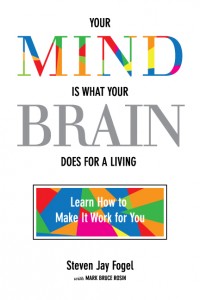Practicing Mindful Meditation
 Many years ago I was doing a research project on success in various fields, and I was fortunate to interview Ram Dass, the spiritual teacher who wrote, among other books, Be Here Now, a classic book for Western readers on spirituality, meditation, and yoga. As part of the book, Ram Dass wrote about his transformation from Richard Alpert, who had gotten a Ph.D. in psychology from Stanford, then taught at Harvard, to Baba Ram Dass, the name he took while studying in India with his Hindu guru, Neem Karoli Baba, who taught him meditation. During our interview, I asked Ram Dass what his experience of meditation was like. He described his meditation practice, which was sometimes hours long, as “a concentration exercise where you develop very powerful concentration, like a laser beam.”
Many years ago I was doing a research project on success in various fields, and I was fortunate to interview Ram Dass, the spiritual teacher who wrote, among other books, Be Here Now, a classic book for Western readers on spirituality, meditation, and yoga. As part of the book, Ram Dass wrote about his transformation from Richard Alpert, who had gotten a Ph.D. in psychology from Stanford, then taught at Harvard, to Baba Ram Dass, the name he took while studying in India with his Hindu guru, Neem Karoli Baba, who taught him meditation. During our interview, I asked Ram Dass what his experience of meditation was like. He described his meditation practice, which was sometimes hours long, as “a concentration exercise where you develop very powerful concentration, like a laser beam.”
Although the meditation practice I’m recommending is for 5 or 10 minutes to half an hour, the practice is still the same as the one Ram Dass described to me. He talked about sitting with your eyes closed and “focusing on the muscle in your abdomen rising and falling with each breath. All you do is watch it rise and fall, and you notice the quality of its rising and the quality of its falling . . .”
When you close your eyes and start observing your breath, thoughts are going to come into your head; that’s normal. You just let them go and return your focus to your breath. Ram Dass described it this way:
Every time a thought comes, you notice what the thought was. Instead of following the thought, you come right back to your breath until your mind gives up and it just stays on the breath. It doesn’t go anywhere. Up until then, you sit down, you start to follow your breath, and your mind is thinking, “For this I got a Ph.D.?” or “My knee hurts,” or “When is lunch?” or “What kind of Mickey Mouse thing is this?” These are all thoughts. The teachers . . . always say, “Whatever arises, notice it, then return your awareness to your breath.” . . . After a while, what happens is you cultivate a part of your brain, or a part of your awareness, that just is. It’s just sitting, watching it all come and go.
Talking about the rewards of meditation practice, Ram Dass shared the following observation, which coincides with what I’ve shared with you about being mindful and dis-identifying with your past-based programming and becoming truly present: “When you realize the way in which your mind is creating your universe, the way in which your childhood and my childhood have all led us to be having a different experience at this moment, and then you start to learn how to go inside in your mind and get behind your own thought forms and break the identification, it gets so exciting and so breathtaking. The meditative practices changed my life.”
An excerpt from my recent book, Your Mind Is What Your Brain Does for a Living, now available at Amazon.
- 8 Jun, 2015
- Posted by Steve Fogel
- 0 Comments



COMMENTS